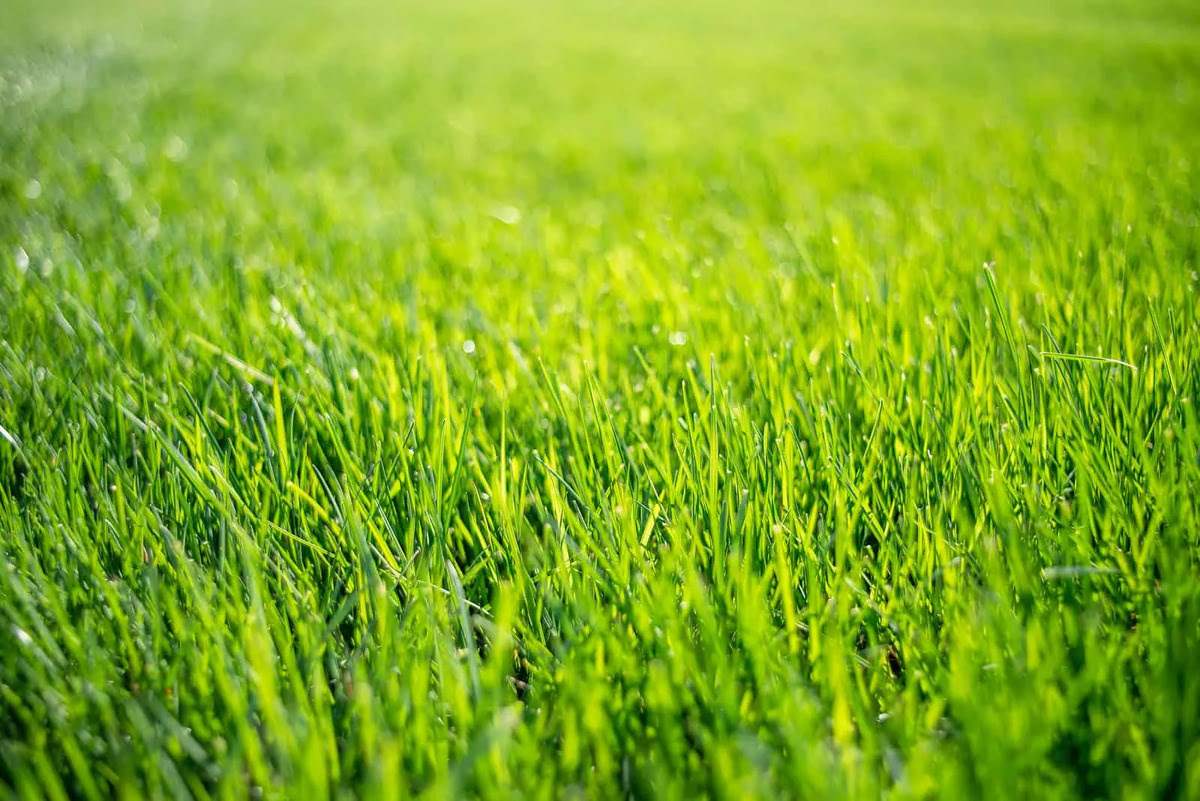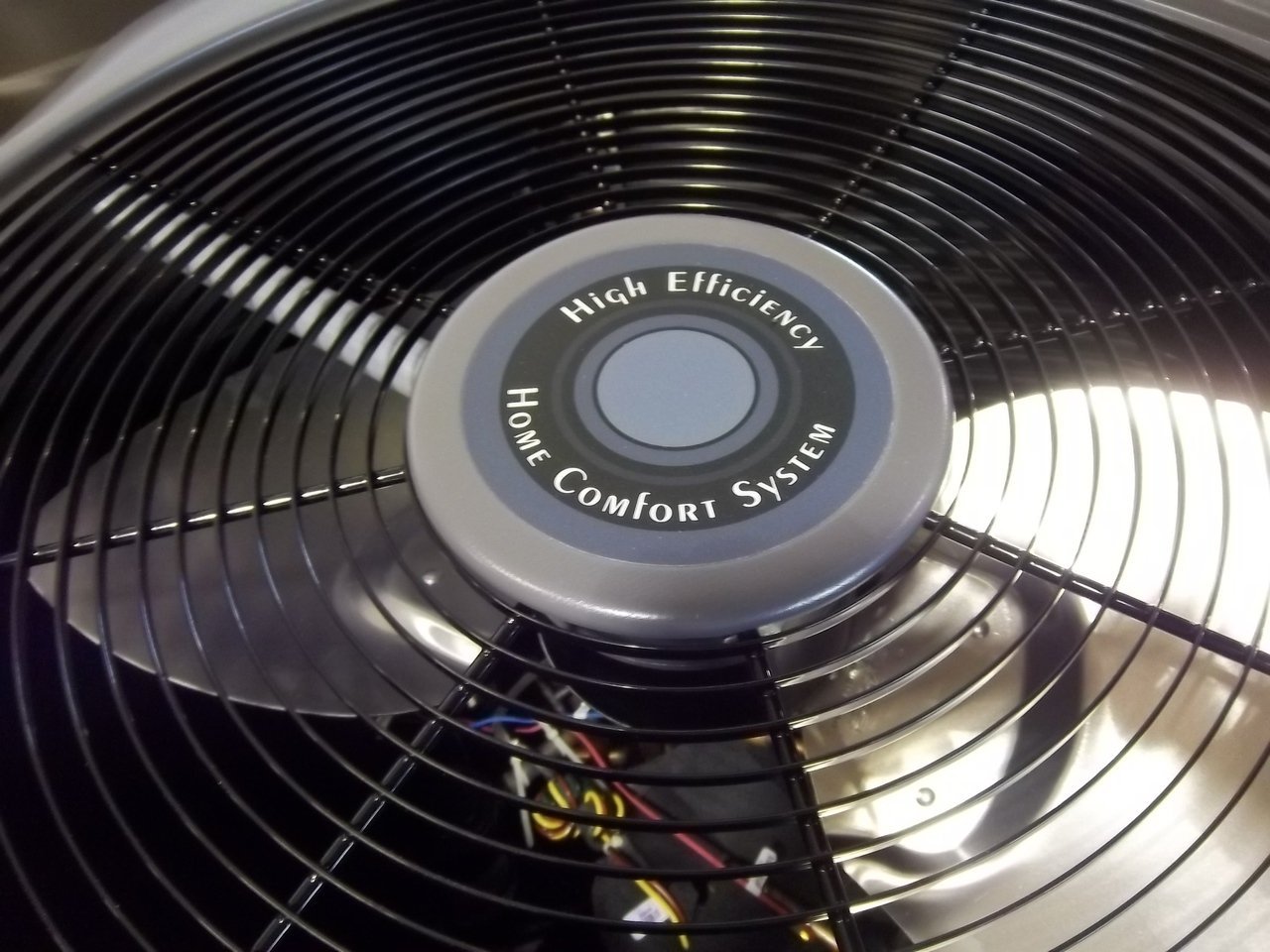Home>Gardening & Outdoor>Landscaping Ideas>Why Is My Grass Growing So Fast


Landscaping Ideas
Why Is My Grass Growing So Fast
Published: January 29, 2024
Discover effective landscaping ideas to control the rapid growth of your grass. Explore expert tips for managing your lawn's lush and fast-growing greenery.
(Many of the links in this article redirect to a specific reviewed product. Your purchase of these products through affiliate links helps to generate commission for Storables.com, at no extra cost. Learn more)
Introduction
If you've ever found yourself wondering, "Why is my grass growing so fast?" you're not alone. The sight of rapidly sprouting grass can be both a source of pride and a cause for concern for homeowners and garden enthusiasts alike. While lush, green lawns are undeniably appealing, the seemingly exponential growth of grass can present its own set of challenges. Understanding the factors that contribute to fast grass growth is the first step toward effectively managing and maintaining your lawn.
In this comprehensive guide, we'll delve into the various elements that influence the speed at which grass grows. From the role of nutrients and weather conditions to the significance of proper lawn maintenance, we'll explore the intricacies of fast grass growth and equip you with valuable insights for managing this natural phenomenon. Whether you're a seasoned gardener or a newcomer to the world of lawn care, this exploration of fast grass growth will provide you with the knowledge and strategies needed to maintain a vibrant and healthy lawn.
Key Takeaways:
- Grass species, nutrients, weather, and maintenance all influence fast grass growth. Understanding and managing these factors is crucial for maintaining a healthy and vibrant lawn.
- Strategies like regular mowing, optimized watering, and targeted fertilization help control rapid grass growth while nurturing a lush and well-balanced lawn. Embracing proactive practices is key.
Read more: How To Stop My Grass From Growing So Fast
Factors that Contribute to Fast Grass Growth
Several key factors contribute to the rapid growth of grass in your lawn. Understanding these elements is essential for implementing effective strategies to manage and maintain your grass. Let’s explore some of the primary factors that influence the speed at which grass grows.
- Grass Species: The type of grass in your lawn plays a significant role in its growth rate. Certain grass species, such as Bermuda grass and Kentucky bluegrass, are known for their vigorous growth patterns, resulting in faster expansion and coverage of the lawn area.
- Nutrient Availability: Adequate access to essential nutrients, particularly nitrogen, phosphorus, and potassium, can fuel rapid grass growth. When these nutrients are readily available in the soil, grass plants can thrive and exhibit accelerated development.
- Soil Quality: The overall health and composition of the soil directly impact grass growth. Well-aerated, loamy soil that is rich in organic matter provides an ideal environment for robust grass growth, enabling the roots to penetrate deeply and access vital nutrients and water.
- Water Supply: Ample water availability is crucial for sustaining fast grass growth. Adequate irrigation, especially during dry spells, ensures that the grass remains hydrated, promoting continuous photosynthesis and cellular expansion.
- Sunlight Exposure: The amount of sunlight received by your lawn plays a pivotal role in grass growth. Sun-loving grass species require sufficient sunlight to undergo photosynthesis and generate energy for growth, leading to accelerated development under optimal light conditions.
By recognizing and addressing these contributing factors, you can gain valuable insights into the dynamics of fast grass growth. In the subsequent sections, we will further explore the role of nutrients, weather conditions, and lawn maintenance in influencing the speed at which grass grows.
Understanding the Role of Nutrients
Nutrients serve as the building blocks for healthy grass growth, playing a pivotal role in the development and vitality of your lawn. When it comes to understanding the dynamics of fast grass growth, the availability and balance of essential nutrients are of paramount importance.
Nitrogen: As a primary component of chlorophyll, nitrogen is indispensable for the process of photosynthesis, enabling grass plants to harness energy from sunlight and produce sugars for growth. Adequate nitrogen levels in the soil fuel the rapid development of leaves and stems, contributing to the lush appearance of the lawn.
Phosphorus: Essential for root development and overall plant vigor, phosphorus supports the establishment of a robust root system, enabling grass plants to access water and nutrients from the soil. This nutrient is particularly vital during the early stages of grass growth, promoting strong root growth and resilience.
Potassium: Often associated with stress tolerance and disease resistance, potassium plays a crucial role in enhancing the overall health and resilience of grass plants. It aids in water regulation within the plant cells, fortifying the grass against environmental stressors and promoting steady growth.
By ensuring that your lawn receives a balanced supply of these essential nutrients, you can optimize the conditions for healthy and vigorous grass growth. Regular soil testing and targeted fertilization can help maintain an optimal nutrient balance, fostering an environment conducive to steady and manageable grass growth.
The Impact of Weather Conditions
Weather conditions exert a profound influence on the growth and development of grass in your lawn. From temperature fluctuations to precipitation patterns, various elements of the weather can either spur or hinder the pace of grass growth. Understanding the interplay between weather conditions and grass growth is essential for effectively managing your lawn throughout the changing seasons.
Temperature: Both air and soil temperatures significantly affect the rate of grass growth. Warmer temperatures generally promote increased metabolic activity in grass plants, leading to accelerated photosynthesis and cellular expansion. Conversely, excessively high temperatures can induce stress and inhibit growth, necessitating adequate irrigation and shade provision to mitigate potential damage.
Precipitation: Adequate moisture is crucial for sustaining fast grass growth. While sufficient rainfall fosters lush, vibrant lawns, prolonged drought conditions can impede growth and lead to dormancy in certain grass species. Effective water management, including irrigation during dry spells and proper drainage to prevent waterlogging, is essential for maintaining optimal growth conditions.
Sunlight: The duration and intensity of sunlight directly impact the photosynthetic activity of grass plants. Adequate sunlight is essential for robust growth, as it fuels the production of sugars and carbohydrates that drive cellular expansion and overall plant development. Shaded areas of the lawn may exhibit slower growth due to reduced sunlight exposure.
Seasonal Variations: Grass growth rates often fluctuate in response to seasonal changes. Spring and early summer typically herald rapid growth as grass emerges from dormancy and capitalizes on favorable growing conditions. Conversely, the growth may slow during the hot, dry months of summer before picking up again in the cooler, moister conditions of fall.
By closely monitoring and adapting to the prevailing weather conditions, you can proactively manage the impact of environmental factors on grass growth. Implementing targeted lawn care practices and adjusting maintenance routines in response to weather fluctuations will enable you to optimize growth conditions and sustain a healthy, thriving lawn throughout the year.
Consider the weather and the type of grass you have. Warm temperatures and plenty of rain can cause grass to grow quickly. Mowing regularly and at the right height can help manage the growth.
Importance of Proper Lawn Maintenance
Effective lawn maintenance plays a pivotal role in managing fast grass growth and fostering a healthy, vibrant lawn. By implementing a comprehensive maintenance regimen, you can exert a significant influence on the pace and quality of grass growth while enhancing the overall appeal of your outdoor space.
Mowing Practices: Regular and proper mowing is essential for controlling the growth of grass. By adhering to the recommended mowing height for your specific grass species and ensuring sharp mower blades, you can promote even growth and discourage the proliferation of thatch, fostering a dense and resilient lawn.
Watering Techniques: Strategic watering practices are critical for sustaining optimal grass growth. Deep, infrequent watering encourages deep root development and minimizes surface evaporation, promoting healthy and robust grass growth while reducing the risk of shallow root systems.
Weed and Pest Control: Effectively managing weeds and pests is integral to maintaining the vigor and uniformity of your lawn. Weeds compete with grass for essential resources, while pests can inflict damage that impedes growth. Implementing targeted control measures helps preserve the integrity of the grass and sustains healthy growth.
Aeration and Dethatching: Periodic aeration and dethatching alleviate soil compaction and remove organic debris, facilitating improved air, water, and nutrient penetration to the grass roots. These practices promote vigorous growth and contribute to the overall health of the lawn.
Fertilization: Applying balanced and targeted fertilization sustains the nutrient levels essential for fast grass growth. By supplementing the soil with the necessary nutrients, you can optimize growing conditions and ensure steady, healthy growth without promoting excessive, unmanageable expansion.
By embracing a proactive and attentive approach to lawn maintenance, you can effectively harness the factors that contribute to fast grass growth while mitigating potential challenges. Cultivating a well-maintained lawn not only supports optimal growth but also enhances the aesthetic appeal and functionality of your outdoor environment, providing a welcoming and enjoyable space for leisure and recreation.
Read more: How To Keep Grass From Growing So Fast
Strategies for Managing Fast Grass Growth
Effectively managing fast grass growth entails a strategic and proactive approach that balances the natural vitality of the lawn with targeted interventions to maintain control and aesthetic appeal. By implementing the following strategies, you can navigate the dynamics of rapid grass growth and cultivate a lush, well-maintained lawn.
Regular Mowing: Consistent and timely mowing is essential for managing fast grass growth. Adhering to the recommended mowing height for your specific grass species and adjusting the frequency of mowing based on growth rates allows you to maintain a neat and uniform lawn while controlling excessive expansion.
Optimized Watering: Implementing a deep and infrequent watering schedule promotes healthy growth while preventing excessive acceleration. By providing adequate moisture without overwatering, you can sustain optimal conditions for grass development without inadvertently stimulating rapid growth.
Targeted Fertilization: Tailoring your fertilization regimen to the specific needs of your lawn helps moderate growth rates while providing essential nutrients. By avoiding excessive nitrogen application, particularly during periods of rapid growth, you can maintain a balanced and manageable growth pattern.
Thorough Aeration: Periodic aeration alleviates soil compaction and promotes robust root development, contributing to healthy and steady grass growth. By enhancing soil structure and nutrient accessibility, aeration helps regulate growth and prevent excessive proliferation.
Strategic Shade Management: Managing shade and sunlight exposure in your lawn can influence grass growth rates. By strategically planting shade-tolerant grass species in shaded areas and optimizing sunlight exposure through tree pruning, you can mitigate uneven growth and maintain control over the lawn’s expansion.
By integrating these targeted strategies into your lawn care routine, you can effectively manage fast grass growth while nurturing a lush and well-balanced lawn. Embracing proactive and informed practices empowers you to harness the vitality of your lawn while maintaining control and promoting the long-term health and beauty of your outdoor space.
Conclusion
The phenomenon of fast grass growth is a dynamic and multifaceted aspect of lawn care that demands a nuanced and strategic approach. By delving into the contributing factors, understanding the role of nutrients, and recognizing the impact of weather conditions, you can gain valuable insights into the intricacies of grass growth and the strategies for effective management.
Proper lawn maintenance emerges as a cornerstone of managing fast grass growth, encompassing essential practices such as mowing, watering, weed control, and fertilization. Through attentive and proactive maintenance, you can exert a significant influence on the pace and quality of grass growth while nurturing a healthy and vibrant lawn.
Implementing targeted strategies, such as optimized watering, regular mowing, and strategic shade management, enables you to navigate the dynamics of rapid grass growth and maintain control over the expansion of your lawn. By integrating these practices into your lawn care routine, you can strike a balance between harnessing the natural vitality of the grass and sustaining a well-maintained and visually appealing outdoor space.
Ultimately, the management of fast grass growth is a harmonious blend of understanding, intervention, and stewardship. By embracing a holistic and informed approach to lawn care, you can cultivate a thriving and resilient lawn that embodies the beauty and vitality of well-managed natural growth.
Armed with this comprehensive understanding and a repertoire of effective strategies, you are poised to embark on a journey of conscientious lawn management, ensuring that the rapid growth of your grass becomes a testament to your expertise and dedication in nurturing a vibrant and inviting outdoor environment.
Frequently Asked Questions about Why Is My Grass Growing So Fast
Was this page helpful?
At Storables.com, we guarantee accurate and reliable information. Our content, validated by Expert Board Contributors, is crafted following stringent Editorial Policies. We're committed to providing you with well-researched, expert-backed insights for all your informational needs.















0 thoughts on “Why Is My Grass Growing So Fast”